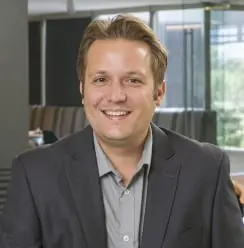 | 1 LU |
 | 1 LU |
COVID-19 accelerated students awareness of non-traditional learning opportunities, to embrace this change, the Kalamazoo Regional Educational Service Agency (KRESA), Kalamazoo, MI partnered with their community industry partners to re-define applied learning for KRESA’s new Career Connect Campus. Michigan industry partners are the catalyst for the industrial revolution v2 Several industry partners in the Kalamazoo surrounding area are working with the KRESA and the architectural team to insure that this connection is an iterative process that balances the “push” of students and the “pull” of industry. Ongoing dialogue and partner development will provide everything from capital to equipment, to mentorships, to internships and to future employment opportunities for students. This is a hands-on session on how innovation stems from a district, design firm, community, and industry partners joining forces with a laser focus on better preparing students for the changing workforce they will soon enter.
Learning Objectives:

Greg is a recognized thought leader in educational architectural design. He joined Wightman as Director of Architecture in 2017, before which he was Director of Design Research for Fanning Howey Associates, including 22 years as a project architect, project manager, and firm principal. He advocates meeting clients' needs through the Design Thinking process, a collaborative process that delivers high-quality, cost-effective solutions. Greg serves as the Midwest Great Lakes Regional representative on the Accredited Learning Environment Planner (ALEP) Commission.

Leanne’s passion for design excellence has primarily focused on K-12 educational facilities. She values the contribution of clients and their stakeholders, and understands the relationships between student and educator needs, and the realities of technical systems. In addition to a detailed knowledge of how a building is put together, she works with her clients to connect people to places of pride, meaning, and the best possible learning opportunities. Leanne often serves clients as project leader and project manager. She leads client engagement activities and presentations, master planning efforts, and design teams in both new construction and renovation projects.

Matt is an expert in Career Technical Education environments. He balances real-world work environment functionality with education environments to deliver high-level, hands-on learning that prepares students for the workforce. Matt’s expertise in architectural design and programming allows him to integrate his knowledge of graphic design with his passion for sustainable architecture to communicate concepts to a variety of clients in both the private and public market sectors. He maintains a client’s vision from first concept to final punch list, ensuring that the project story intimately and uniquely communicates the clients’ vision, mission, and values through design.
This track addresses the Response to real-world events and experiences that impact our daily life and our ability to function normally and be productive. The response to these occurrences is reflected in the learning environments we create and leads to the question – how can schools respond to real-world crises in a way that supports the well-being of occupants and our students' learning journey? How do we respond with approaches and strategies that may be used to balance the inability and lack of needed financial resources to address deficiencies within our learning environments’ infrastructure? Topics expand on the Art approach to the theme, but also include Science in the form of findings and outcomes through case studies and examples of successful responses to real-world conditions and events such as the COVID-19 pandemic, climate change, declining student enrollment, economics, equity, and other topics.
Primary Core Competency
Design of Educational Facilities: Acts as a resource to the design team in providing ongoing guidance and support to ensure that the emerging and ultimate design aligns with the established community vision, education goals, future programming, written design standards, best/next practices and education policy.